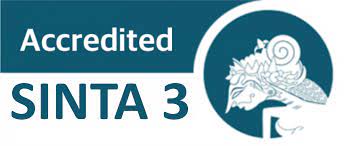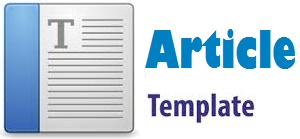IMPLEMENTATION OF PROJECT BASED LEARNING MODEL BASED ON CODING SCRATCH PRODUCTS TO INCREASE STUDENTS' UNDERSTANDING OF PRESERVING NATIONAL CULTURE
Abstract
Keywords
Full Text:
PDFReferences
Ahmad, I. I., Hanifah, N., Aeni, A. N., Ismail, A., Sujana, A., & Maulana. (2024). Development of E-Angklung to Improve Musical Instrument Playing Skills for Class V Elementary School Students. Journal of Religious and Social Sciences, 2621-0681.
Arikunto, S. (2015). Classroom Action Research (CAR). Jakarta: PT. Literary Earth.
Dwihantoro, P., Susanti, D., Sukmasetya, P., & Faizah, R. (2023). Digitalization of Njanen Arts: Cultural Preservation Strategy Through Social Media Platforms. Madaniya, 156-164.
Fujiawati, S. F. (2016). Understanding Curriculum and Learning Concepts with Concept Maps for Arts Education Students. JPKS (Journal of Education and Arts Studies), 16-28.
Grace, H., & Setiawan, B. (2019). Documentation of the Application of Central Javanese Batik Decorations with Kawung Motifs, as an Effort to Conservation National Culture, Especially in Interior Design. Accents: Journal Of Design and Creative Industry, 25-37.
Hariyadi, H., Misnawati, M., & Yusrizal, Y. (2023). Realizing Learning Independence: Learning Independence as the Key to Success for Distance Students. Semarang: STIEPARI Press Publishing Agency Editorial.
Khotimah, U. (2022). The Influence of Technology on 21st Century Learning. OSF, 1-5.
Lestari, I. F. (2019). Development of Stracht-Based Learning Media to Improve Learning Outcomes for Grade IV Elementary Schools. Journal of Elementary School Teacher Education Research, 3567-3576.
Luthfyyah, R. Z., Nurhikmah, J., Najayanti, Irsalina, S., Nabila, S., & Alindra, A. L. (2023). The Influence of Scratch-Based Learning Media on the Learning Motivation of Grade IV Students at One of the Purwakata Elementary Schools. INNOVATIVE: Journal of Social Science Research, 5722-5731.
Ningari, W. F. (2022). Improving Citizenship Education Learning Outcomes Through Contextual and Learning Methods. Didactica: Journal of Education and Learning Studies, 2(1), 31-37. https://doi.org/10.56393/didactica.v2i1.1141
Pawestri, E., & Zulfiati, H. M. (2020). Development of Student Worksheets (Lkpd) to Accommodate Student Diversity in Class II Thematic Learning at SD Muhammadiyah Danunegaran. Trihayu: Journal of Elementary School Education, 903-913.
Rahayu, R., Iskandar, S., & Abidin, Y. (2022). 21st Century Learning Innovations and Their Application in Indonesia. Jurnal Basicedu, 2099-2104.
Rahmadani, D., & Syuraini, S. (2021). Environmental Relationships Study with Citizens' Learning Motivation Learn to Program Pursue Package C at Spnf Padang Panjang. Tambusai Education Journal, 362-369.
Sevrika, H., & Putri, M. D. (2022). Training on Guiding English Teachers at John Febby Padang Middle School in Creating a Good Teaching Atmosphere Positive and Fun for Students. JUPADAI: Community Service Journal, 84-88.
Sutriningsih, N. (2015). Circle Learning Through Systematic Problem Solving Strategies. Creation Journal, 28-35.
Yufenty, W., Roza, Y., & Maimunah. (2019). Analysis of Concept Understanding Ability of Class VIII Middle School Students on Circle Material. Decimal: Journal of Mathematics, 197-202.
DOI: https://doi.org/10.18860/abj.v9i2.27190
Refbacks
- There are currently no refbacks.
Copyright (c) 2024 Rudi Siswandi, Dila Mahanani, Muhammad Salahudin, Isnaini Isnaini, Ni Luh Budiarsani
License URL: https://creativecommons.org/licenses/by-sa/4.0/
...............................................................................................................................................................
Mailing Address:
Ruang Jurnal Abjadia, Fakultas Ilmu Tarbiyah dan Keguruan (FITK)
Universitas Islam Negeri (UIN) Maulana Malik Ibrahim Malang
Jalan Gajayana 50 Malang 65144, Jawa Timur, Indonesia
Phone/Faximile: (+62341) 552398, Phonsel: +6281333666063
Website: http://ejournal.uin-malang.ac.id/index.php/abjadia
Email: abjadia@uin-malang.com
Abjadia: International Journal of Education. This work is licensed under a Creative Commons Attribution-ShareAlike 4.0 International License.
...............................................................................................................................................................
Indexed by:






